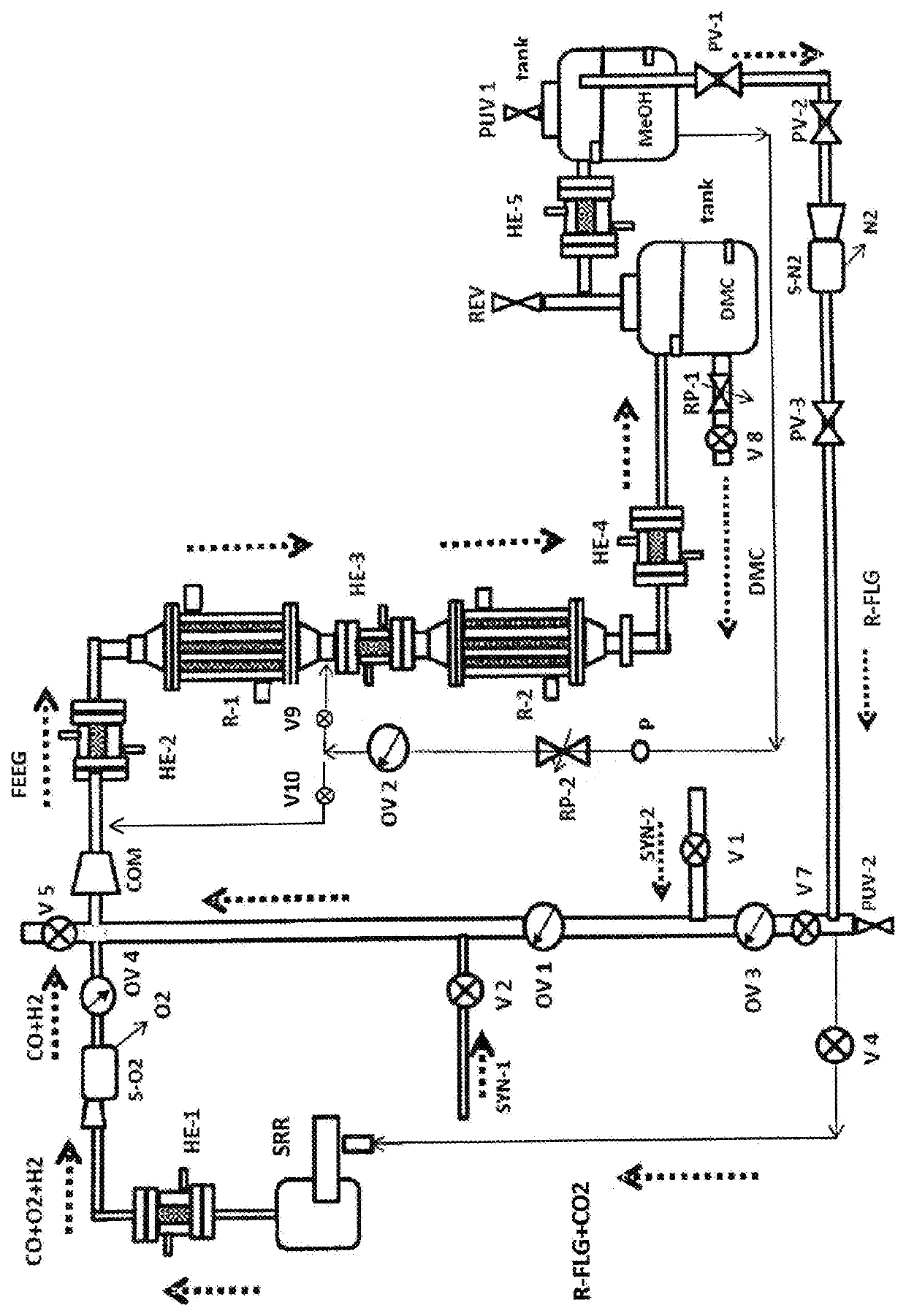Apparatus and process for producing dimethyl carbonate
a dimethyl carbonate and apparatus technology, applied in the field of apparatus and process for producing dimethyl carbonate, can solve the problems of high phosgene toxicity, co-produced hydrogen chloride disposal, high cost of oxygen, etc., and achieve the effects of reducing the cost of dmc production, improving purity, and producing dmc with competitive yields and selectivity
- Summary
- Abstract
- Description
- Claims
- Application Information
AI Technical Summary
Benefits of technology
Problems solved by technology
Method used
Image
Examples
example
[0089]The gasification of 1 kilogram of average plastic waste (polyethylene) reacting with water steam produces 2.35 NM3 of syngas mainly containing H2, CO and CO2 within the ranges mentioned above, which is capable to produce approximately 1.16 kg of DMC and 0.115 kg of MeOH under the following conditions: 38 bars, 110 to 240° C., and 4,200 h−1GHSV. FLG left from the DMC production is mainly composed of CO2 and some gases that have not been converted to DMC: H2, CO, N2, CH4 and some MeOH.
[0090]Variations to the above example can be made, for example, gases to replace the SG from the gasification can be bought or obtained from other processes such as steam reforming of hydrocarbons. Also, MeOH vapor accompanied with CO2, and CO, are able to replace the SG from the gasification process. These variations have the advantage of not having N2 and CH4 in the flue gas (FLG). However, if using flue gas for feeding the DMC reactor the costs for the raw materials can be lowered.
[0091]In a fur...
PUM
| Property | Measurement | Unit |
|---|---|---|
| weight percent | aaaaa | aaaaa |
| weight percent | aaaaa | aaaaa |
| weight percent | aaaaa | aaaaa |
Abstract
Description
Claims
Application Information
 Login to View More
Login to View More - R&D
- Intellectual Property
- Life Sciences
- Materials
- Tech Scout
- Unparalleled Data Quality
- Higher Quality Content
- 60% Fewer Hallucinations
Browse by: Latest US Patents, China's latest patents, Technical Efficacy Thesaurus, Application Domain, Technology Topic, Popular Technical Reports.
© 2025 PatSnap. All rights reserved.Legal|Privacy policy|Modern Slavery Act Transparency Statement|Sitemap|About US| Contact US: help@patsnap.com



